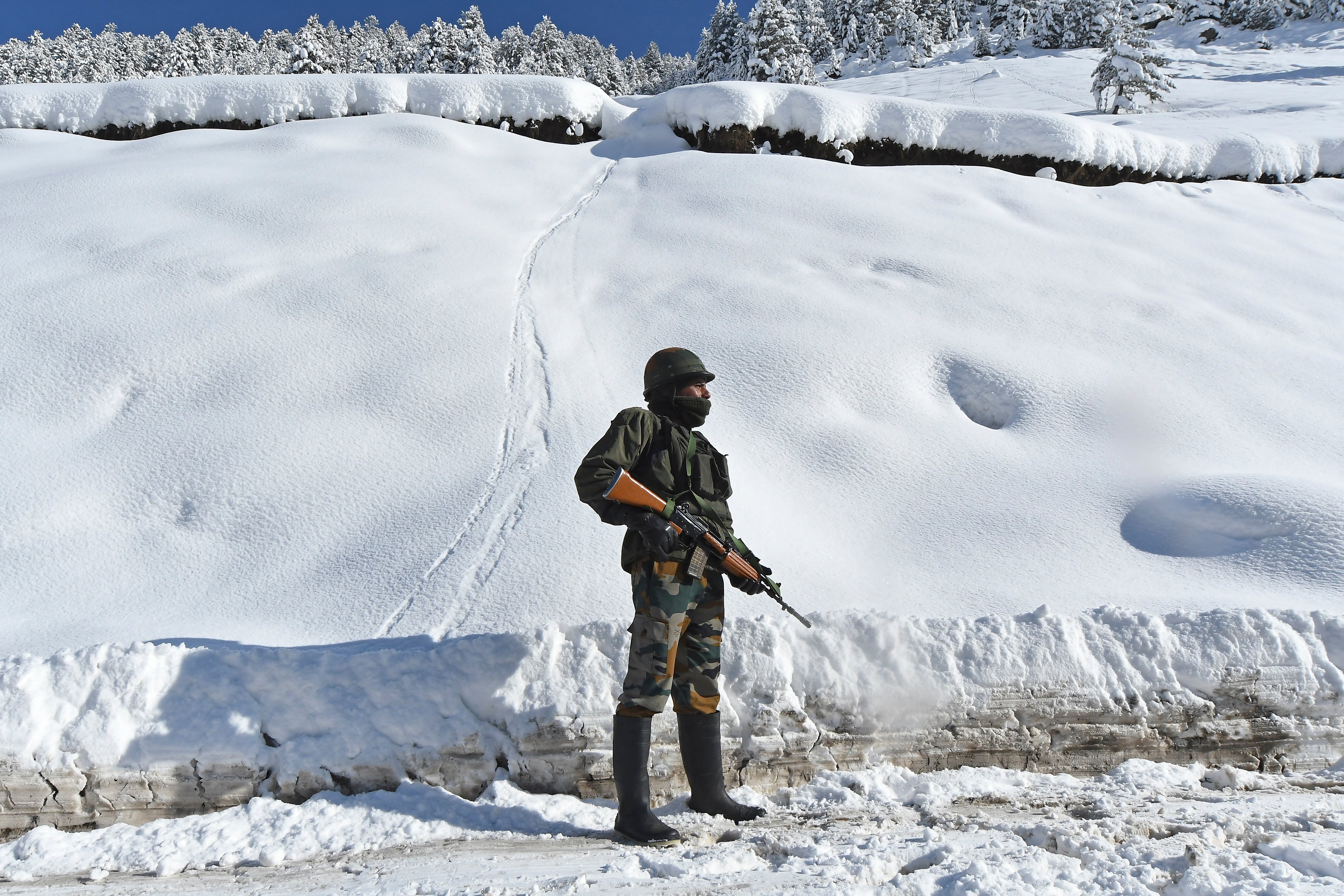India says it has reached a deal with China to ease four-year crisis at disputed border
Ties between hostile neighbours hit a new low four years ago after 20 Indian and four Chinese soldiers were killed in a deadly clash in the Himalayas
Your support helps us to tell the story
From reproductive rights to climate change to Big Tech, The Independent is on the ground when the story is developing. Whether it's investigating the financials of Elon Musk's pro-Trump PAC or producing our latest documentary, 'The A Word', which shines a light on the American women fighting for reproductive rights, we know how important it is to parse out the facts from the messaging.
At such a critical moment in US history, we need reporters on the ground. Your donation allows us to keep sending journalists to speak to both sides of the story.
The Independent is trusted by Americans across the entire political spectrum. And unlike many other quality news outlets, we choose not to lock Americans out of our reporting and analysis with paywalls. We believe quality journalism should be available to everyone, paid for by those who can afford it.
Your support makes all the difference.India and China have reached an agreement on military patrols along their disputed Himalayan border, marking a significant step towards resolving a standoff that began in 2020.
India’s foreign ministry confirmed the agreement after weeks of discussions between military and diplomatic representatives.
The announcement was made on the eve of prime minister Narendra Modi’s visit to Russia for the Brics summit, which is being attended by leaders of major developing economies, including China. Indian media reported that Mr Modi could hold talks with Chinese president Xi Jinping on the sidelines of the summit.
“Over the last several weeks, Indian and Chinese diplomats and military negotiators have been in close contact with each other, and as a result of these discussions an agreement has been arrived at on patrolling arrangements along the India-China de facto border leading to the disengagements and a resolution of the issues that had arisen in 2020,” foreign secretary Vikram Misri said at a press conference on Monday.
He did not provide any details of the terms of the agreement.
“It’s going in a positive direction but modalities are being worked upon and further plans can be announced after the possible meeting between prime minister Narendra Modi and Chinese president Xi Jinping on the sidelines of Brics,” local broadcaster CNN-IBN reported, quoting a source in the defence ministry.

India and China share a 3,488km border that runs from Ladakh in the west to Arunachal Pradesh in the east. China holds a large piece of territory called the Aksai Chin in Ladakh that it won during the 1962 war with India and claims Arunachal as part of the province of Tibet.
Relations between the hostile neighbours hit a new low in July 2020 after at least 20 Indian armymen and four Chinese soldiers were killed in a deadly clash in the Galwan Valley in Ladakh. It was the first time in 45 years that a clash on the border had led to fatalities.
The clash quickly turned into a standoff, with both sides stationing thousands of military personnel backed by artillery, tanks and fighter jets along the border.
“Troops on both sides blocked access to each other from patrolling areas as per their perception of the LAC,” Kalpit A Mankikar of the Indian think tank Observer Research Foundation said. “De-escalating along the boundary is a top priority for India.”
While Mr Misri did not elaborate whether the deal would lead to the withdrawal of the tens of thousands of soldiers from Ladakh, it could pave the way towards easing tensions.
China confirmed the agreement on Tuesday.
“China and India recently have maintained close communication on issues related to the border through diplomatic and military channels. At present, the two sides have reached a solution to the relevant issues which China views positively,” foreign ministry spokesperson Lin Jian said, adding that Beijing would work with New Delhi to implement the pact.
Although India and China have pulled back some forces from the Pangong Tso Lake and the Galwan Valley in recent years, they have stayed put in other strategic areas, with ongoing talks focused on further troop disengagement.
Senior commanders have conducted multiple rounds of negotiations aimed at resolving the standoff.
Indian army chief General Upendra Dwivedi emphasised earlier this month his country sought to restore the status that existed along the western Himalayan border before the tensions escalated in April 2020.
Ongoing diplomacy had been encouraging, he said, but the final resolution of the standoff would depend on decisions by military leaders on the ground.
Foreign minister Subrahmanyam Jaishankar echoed this cautious optimism, describing the agreement as the outcome “of very patient and very persevering diplomacy”.
He said military patrols would likely return to the pre-2020 patterns, which was key to re-establishing peace along the border. Speaking to NDTV, Mr Jaishankar said normalising the situation on the border was essential for India-China relations to move forward.
“Friction happens but this is a major breakthrough,” he said.
“Hopefully, we will be able to come back to peace and tranquillity. And that was our major concern because we always said that if you disturb peace and tranquillity, how do you expect the rest of the relationship to go forward.”

The US was closely monitoring the development, a US State Department spokesperson told South China Morning Post, adding that it did not have details of the “reported arrangement”.
Geopolitical experts suggested that while the new agreement was a “step towards normalcy”, issues between the two nations were far from resolved.
“The fundamental tenet vis-à-vis China is peace and tranquillity along the border is a prerequisite for restarting bilateral relations,” Mr Mankikar told The Independent.
“Since China’s aggression against India in 2020, there has been an effort to examine trade, technology, investment, and civil society interaction from an integrated lens.”
After the violent clash in Galwan, calls were made in India for a boycott of Chinese goods and investments. The government responded by outlining measures to curb reliance on Chinese imports such as raising trade barriers, increasing import duties on around 300 products and barring Chinese companies from participating in India’s telecom project bids.
It also banned several Chinese apps, including Tik Tok, claiming that they engaged “in activities which are prejudicial to sovereignty and integrity of India, defence of India, security of state and public order”.
There was no indication from Indian authorities if and when these curbs would be lifted,
Mr Mankikar suggested New Delhi “wait for how patrolling arrangements pan out on the ground” before making a decision.
“China won’t stop being a strategic competitor to India and New Delhi’s broader concerns about Chinese power and provocations won’t abate just because there’s a border accord,” Michael Kugelman of the Wilson Centre told the South China Morning Post. The improved ties would make Brics summit “more effective” but it was “not necessarily a precursor to a full-fledged bilateral detente”.

Join our commenting forum
Join thought-provoking conversations, follow other Independent readers and see their replies
Comments